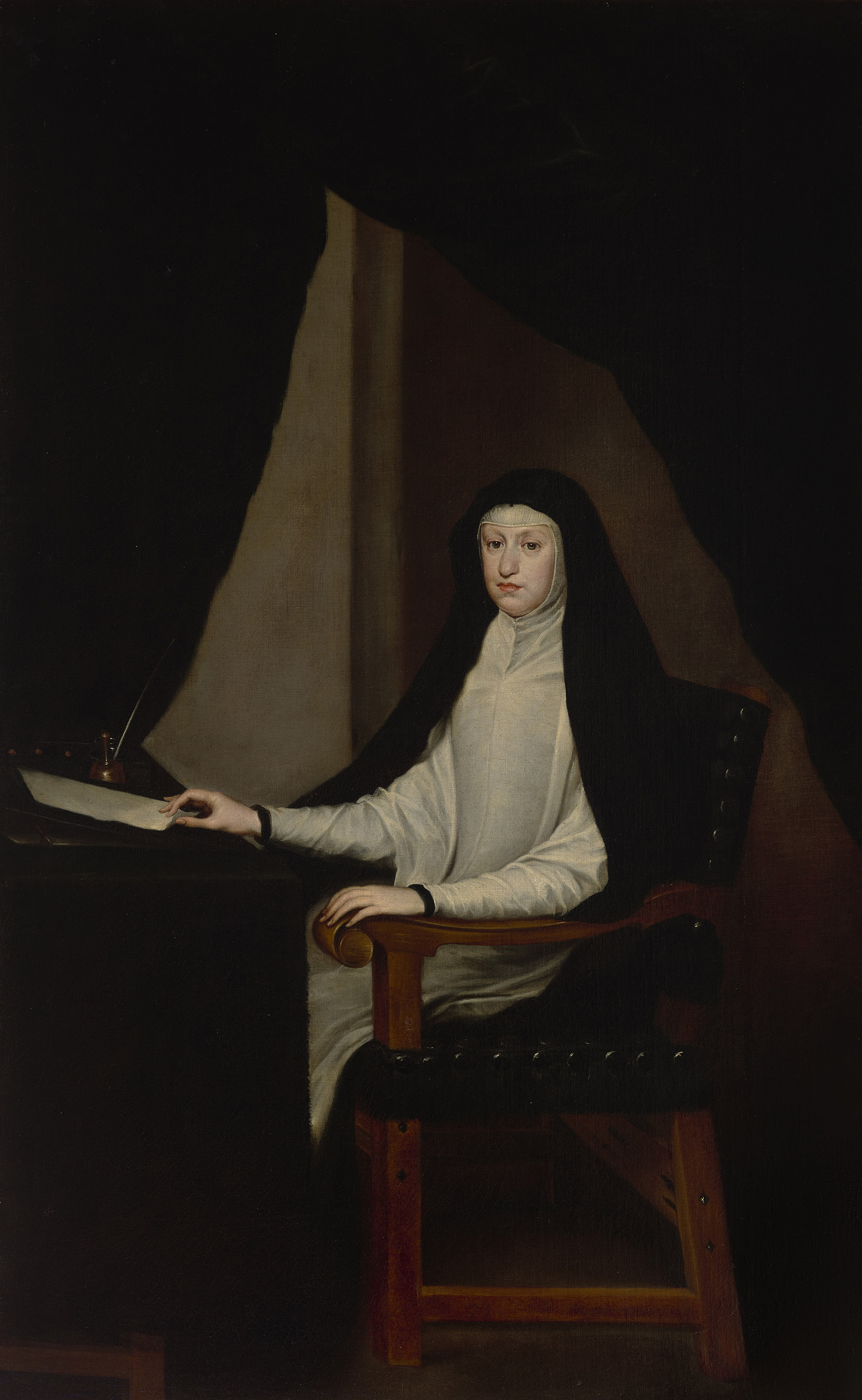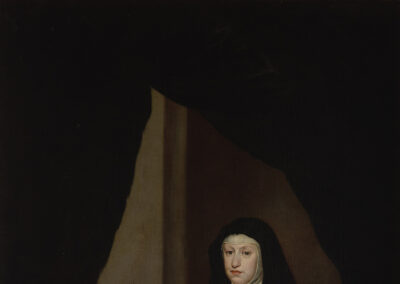The death of Philip IV in 1665, leaving a successor who had not yet reached the age of four, led to his mother being appointed regent, a circumstance that forced royal portraitists to create a hitherto unpublished type of royal portrait: that of a queen governor. In a recent article, Gloria Martínez Leiva (2023) traces the sequence from the first portraits by Juan Bautista del Mazo in 1666 to the type to which this portrait belongs, created by Carreño Miranda after his appointment as court painter in 1671.
Juan Bautista del Mazo had already depicted the queen mother seated on several occasions, dressed in widow's headdresses and holding a folded piece of paper in her hand - a symbol of her new executive functions - but in the background he added a child's scene that also linked her to the education of the young prince. Carreño, in order to focus the representation on her function of government, dispensed with the latter element and added a buffet on which she conducted her affairs by means of papers.
Almost all the portraits of the widowed Queen Mariana of Austria painted by the Asturian master have these common elements: dressed in widow's headdresses in the colours of the Dominican habit, modest dress that decorum demanded out of respect for the deceased king, seated on a friar's armchair upholstered in black velvet, before a buffet covered with a black cloth, on which she displays her writing instruments, pen, inkwell and some papers that she has just abandoned to look at the viewer.
Only in two, the later ones, does she appear standing, with the traditional pose of a female court portrait: her hand resting on the same chair on which she previously sat. The original of this new type is documented in 1676, the year in which Carreño gave it to the Count of Harrach when he stepped down as imperial ambassador to the court in Madrid [P. López Vizcaino- A.M. Carreño, 2007], i.e. a year after Charles II came of age and the queen mother lost her status as regent.
The very ancient tradition of indicating royal majesty with a seated figure suggests that the seated portraits of the Queen Dowager correspond to the official type that originated and spread during the time of her regency. Among those of the queen regent type, to which this portrait belongs, there are minor variations, mainly affecting the background and the position of the queen's right hand on the papers. It has been assumed that the prototype created by Carreño would be the best known of these, as one of his versions is in the Museo del Prado, a version with the hall of mirrors in the Royal Alcazar as the background. This setting was not the cabinet where the queen usually held her offices, which was located in the antechamber of the old tower, a spatial fiction added by the Asturian master, perhaps with the aim of conveying greater solemnity to the setting in which the regent exercised her functions.
In the present portrait the space is much more neutral, a simple black curtain with a half-open door, a setting more similar to that of Mazo's portraits, except for the children's scene that reveals the open door. Perhaps the chronological logic could be reversed and, in the task before the flamboyant painter de Cámara, he created for the heir a highly colourful compositional scheme in the hall of mirrors and, as a counter-figure, that of a queen depicted with the severity that the functions of government and the memory of the deceased king demand and who, later, in the face of growing contestation, would be depicted as the heir to the throne and, as the heir to the throne, would be depicted as a queen in the hall of mirrors, Later, as the political abilities of the person who had honoured him with such a precious position at court were increasingly challenged, a spatial context was added to put the regent on the same scenic footing as the portraits of the heir.
Although the apparently younger face of this portrait - much more evident in the black background version in the Nelson Atkins Museum in Kansas - would argue in favour of the earlier date of this type, and both options seem to us to be of equivalent logical plausibility, we limit ourselves to indicating a time span from 1671, when Carreño was appointed painter of the Chamber, to 1675, when Mariana of Neoburg ceased to be regent.


